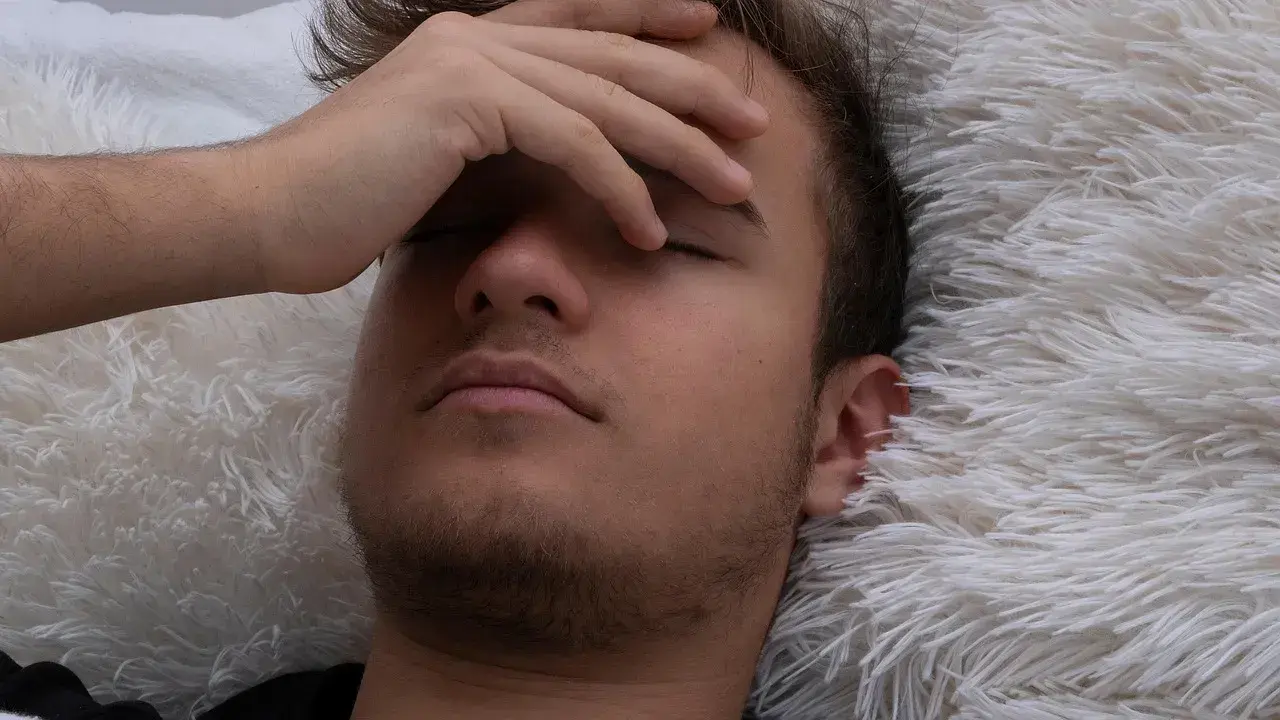With a success rate of nearly 95%, hip replacement surgery in the USA is considered highly effective. Yet, some patients experience unexpected discomfort, particularly buttock pain, during recovery. So, what are the causes of buttock pain after hip replacement? Factors such as weak gluteal muscles, nerve irritation, or improper positioning of the implant may contribute. Recognizing these possible causes is crucial for early management, faster recovery, and preventing long-term complications. In this article, we’ll break down the common reasons behind buttock pain after hip replacement and practical ways to manage it effectively.
8 Causes of Buttock Pain After Hip Replacement
The following are the common reasons for buttock pain following hip surgery:
1. Muscle Weakness or Imbalance
Muscles around the buttocks and hip get weak because of limited movement during the recovery phase.
This causes pain or discomfort in the buttocks, especially while standing or walking.
2. Nerve Irritation or Injury
Nerves around the hip (e.g., a sciatic nerve) might get irritated during the surgery or recovery process.
This consequently can cause referred nerve pain in the area of the buttock that can even move down the leg.
3. Trochanteric Bursitis
This condition is marked by the inflammation of the bursa called the greater trochanter, which covers the bony point of the thigh bone.
A 2024 study reports that the inflamed bursa leads to pain in the buttocks and outer hip, particularly while practicing high-impact exercises, climbing stairs, and sitting.
4. Changes in Gait or Posture
Changes in the gait (a person's way of walking) can occur after the surgery due to altered mobility, reduced pain, or the adaptation of the body to the new hip joint.
These adjustments can cause additional strain on the tendons, ligaments, and muscles in the buttocks, causing pain.
5. Infection or Inflammation
Although rare, sometimes infections can occur in or around the treated area, putting more pressure on the hip area and thus, causing pain and swelling.
Moreover, inflammation in the surrounding tissue or hip joint can also contribute to pain.
6. Implant-related Complications
Research says that improper positioning or even hip implant loosening might also lead to pain or discomfort in the buttock and hip area.
Unalignment of the hip implants might put excessive stress on the joints and surrounding muscles, resulting in discomfort or pain.
7. Scar Tissue Formation
Scar tissue may form around the treated site that can sometimes limit the movement or press nearby muscles, nerves, or other soft tissues.
This can contribute to pain in the hip and buttocks, which may decrease slowly after the body recovers well.
8. Excess Physical Therapy Intensity
Excessive physical therapy to improve flexibility or strength can also lead to strain or overuse of muscles around the buttocks and hip.
This might cause discomfort and pain in the buttocks, particularly when engaging in too many physical activities.
By identifying and addressing all these potential causes with the help of doctors, you can manage and reduce buttock pain post-hip replacement surgery.
Is Buttock Pain Normal After Hip Replacement?
Yes, buttock pain after hip replacement surgery is normal, as it's a part of the surgical and healing process. It occurs due to the following factors:
Muscle strain or injury during surgery.
Irritation of the sciatic nerve or other nerves.
Tendinitis, inflammation of tendons in the buttocks.
Impingement of the new hip implant on other structures of the hip joint.
Wound healing after the surgery.
Inflammatory response to surgery.
The duration and severity of the butt pain after the surgery can vary based on the cause of the pain and individual factors. Most people experience relief from pain in a couple of weeks and months post-surgery, while some may have persistent or worsening pain.
Connection of Hips to Buttocks: How Pain Occurs?
According to anatomy, the hips and buttocks connect via the pelvis and a series of various muscles.
One specific muscle, like the piriformis muscle, is present in the buttocks and connects just above the area of the hip joint. Hence, when there is a hip replacement surgery, the surrounding areas, such as the buttocks, also get affected. That’s why you experience buttock pain.
For instance, gluteal muscles, which are responsible for protecting the hip joints, are involved during hip surgery. Though the surgery improves the hip joint, it can still impact the gluteal muscles and cause gluteal tendinopathy (inflammation of the tendons that attach the gluteal muscles to the hip bone).
Risk Factors for Developing Buttock Pain
The following factors can raise the risk of buttock pain post-hip replacement surgery:
Pre-Surgery Factors
Pre-existing tendon-related issues, like gluteal tendinopathy
Severe osteoarthritis of the hip (hip arthritis)
Previous hip surgery
Age (older and younger people might have high tendon degeneration or nerve injury
Chronic medical conditions, such as diabetes, can increase nerve injury risk
Surgery and Implant-related Factors
Choice of surgical approach, for instance, a posterior surgical approach
Implant Issues, like poor sizing, loosening, and poor positioning of the component.
Irritation or injury of the sciatic or gluteal nerves during surgery.
Abductor mechanism injury (a damage to tendons or abductor muscles) during a surgical procedure.
Post-Surgery Factors
Inadequate rehabilitation program
Returning to high-impact activities early
Leg length discrepancies (an improper leg length), changing walking manner, and stressing soft tissue.
When to See a Doctor?
In case of buttock pain after the hip replacement, consult the doctor if there is :
intense and persistent pain
worsening pain despite the physical therapy
redness or swelling
limited mobility
numbness or tingling sensations in the buttocks or legs
fever or chills
unusual discharge from the surgical site
The healthcare providers look for the underlying causes and personalize the treatment accordingly.
How is the Cause of Hip Pain Diagnosed?
To find the exact cause of buttock pain and determine the effective treatment, the healthcare providers help with:
Clinical Examination
Assess the location and traits of pain
Test the range of motion
Evaluate the muscle strength
Ask for the medical history
Imaging Studies
X-rays: To examine the implant position and healing of bone.
MRI Scan: To evaluate soft tissue structures, such as muscles, bursae, and tendons.
Ultrasound: To assess the function of the tendon.
CT Scan: To get detailed information about the condition of the implant and bone.
Blood tests: To find out the chances of infection.
Nerve conduction studies: To identify nerve damage.
Treatment Options for Buttock Pain Post Hip Replacement Surgery
Here are the effective treatment options for buttock pain:
Physical Therapy
Uses exercises to strengthen the hip flexors, gluteal muscles, and core muscles to reduce strain and improve stability.
Aims at mobility & flexibility exercises to increase the range of motion as well as prevent muscle tightness.
Pain Management
Uses pain medications such as acetaminophen or ibuprofen as prescribed by the doctors to relieve inflammation and pain.
Apply an ice pack or heating pad to the affected area to temporarily relieve pain and swelling and relax muscles.
Massage and Myofascial Release Therapy
Myofascial release or professional massage therapy to improve blood flow and ease muscle tightness.
Also, a gentle massage around the buttocks and hip area can prevent muscle tension.
Nerve Pain Treatment
In case sciatic nerve irritation is the cause, the doctors might prescribe medications such as amitriptyline or gabapentin to soothe nerve pain.
Nerve mobilization techniques may also help prevent compression and irritation in the sciatic nerve.
Steroid Injections
If trochanteric bursitis is present, the providers might suggest corticosteroid injections to relieve pain and reduce swelling.
These injections help reduce swelling or inflammation in the surrounding muscles, especially in the piriformis muscle (the common source of buttock pain).
Physical Activity Adjustments
Change everyday activities to prevent additional pressure on the buttocks and hips, especially high-intensity physical activities that can increase the pain.
Use supportive devices such as crutches or walking aids (suggested by the doctor) to avoid strain on the new hip joint.
Gait & Posture Correction
Seek help from physical therapists to fix posture or gait issues that can be contributing factors to buttock pain.
This ensures the correct mechanism of the body while walking, sitting, and even standing to reduce further discomfort.
Platelet-Rich Plasma (PRP) Injections
The advanced treatment that involves delivering concentrated blood platelets taken from the person's blood to the damaged area, repairing damaged gluteal tendons that may be causing pain.
Also, it reduces inflammation and supports tissue regeneration, which helps with pain relief.
Prolotherapy
This procedure involves injecting an irritant, like dextrose solution, into the damaged soft tissues of the buttocks, supporting the healing of tendons and ligaments.
Additionally, by promoting tissue regeneration, it relieves buttock pain and improves stability in the buttocks and hip area.
Revision Surgery
In cases where the buttock pain continues and shows no response to other treatments, there might be implant-related issues that might be causing pain.
The healthcare providers may recommend revision surgery to fix incorrectly positioned or loose hip implants.
By using these different treatments, the providers can help manage buttock pain and support complete recovery.
Rehabilitation and Recovery
Successful outcomes after hip replacement surgery need proper rehabilitation and recovery, which can reduce complications like buttock pain and support healing in the long term. This helps restore optimal mobility and improve quality of life.
Post-Surgery Care
Avoid sudden movements and excessive weight bearing to minimize the chances of complications.
Check for signs of infection or instability around artificial joints.
Lifestyle Modifications
Adopt a healthier lifestyle, like maintaining a healthy body weight and avoiding high-impact exercises (such as running and jumping).
They can help prevent strain on the hip joint and long-term complications, supporting the recovery process.
Progress Monitoring
Consult the pain management doctor regularly to ensure the customized pain management treatment is working effectively.
Monitoring the progress and adjusting the treatment plan accordingly can improve outcomes.
Tips To Manage Hip Pain After Arthroplasty
Though the treatments are beneficial, prevention is also crucial to reduce further complications:
1. Follow Rehabilitation Guidelines
Carefully follow rehabilitation guidelines (e.g. strengthening and range of motion exercises 3 times per day) to improve flexibility and strengthen muscles.
2. Avoid Over-Strain
Increase daily activity levels slowly to reduce the risk of overstraining the hip muscle.
3. Stay Active
Practice low-impact exercises such as walking regularly to maintain strong muscles, regain movement, and improve flexibility.
4. Correct Posture and Walking Manner
Work on proper standing and walking strategies to prevent the chances of strain on the buttocks.
5. Strengthen Muscles
Focus on strengthening core muscles, hip flexors, as well as glutes to avoid muscle imbalances.
6. Manage Weight
Manage a healthy body weight to reduce excessive pressure on the new hip joint and other surrounding muscles.
7. Utilize Good Body Mechanics
Lift or move things correctly and cautiously to avoid strain on the muscle or joint.
8. Move Regularly
Do not sit for prolonged periods. Change your position frequently to minimize the strain on the buttocks and pelvic area.
9. Wear Supportive Footwear:
Wear footwear with a good arch and cushion to prevent stress on the hips and lower part of your back.
10. Increase Normal Activities Gradually
Return to normal activities gradually to prevent the overloading of joints and muscles of the hip.
Final Thoughts
Understanding the causes of buttock pain after hip replacement is crucial to managing and preventing the discomfort. If the pain continues and worsens, see a doctor to find out the possible underlying pain-causing factors and the right treatment.
Remember that regular follow-up and sticking to rehabilitation guidelines can ease recovery and reduce the risk of persistent buttock pain.
Disclaimer: This information is for educational purposes only and shouldn't replace professional advice. Always consult a certified healthcare provider for recommendations of personalized treatment.
Also Read 8 Causes of Hip Pain
अक्सर पूछे जाने वाले प्रश्नों
Is buttock pain after hip replacement severe?
The severity depends on the symptoms and underlying causes. If the pain is extreme, throbbing, does not subside, or comes along with infection signs (like fever, chills, or pus), seek medical help immediately.
Why is my hip replacement hurting after 5 years?
It can be due to the wear and tear of components, loosening of artificial implants, inflammation of tendons, and infection. See a doctor for an appropriate evaluation and treatment.
Is it normal to have buttock pain after hip replacement?
Yes, it's normal to experience buttock pain post-surgery as it is a part of the recovery process.
How long does it take for muscles to stop hurting after hip replacement?
It can take around 10-12 weeks to return to normal activities. However, a full recovery will take approximately 6-12 months.
Can you overdo walking after hip replacement?
No, avoid it. Instead, slowly increase the walking distance and duration to avoid additional strain on the new hip joint.
Can hip replacement surgery always reduce pain completely?
No, it's not a guaranteed solution and hence, patients need to understand the factors impacting its success.
लेखक






